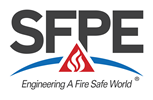FEMTC 2018
Acceptance Criteria in Fire Safety Engineering: A Review and Case Study 
Daniel Rosberg - WSP Brand & Risk
Abstract
The gradual transition from prescriptive to performance-based regulations has led to a worldwide development of methods and techniques for designing and verifying the fire life safety performance of buildings as well as transportation infrastructure In the early days of performance based regulation, many countries did not include quantitative performance criteria In addition, the conditions under which the building/system should be tested were often ill-defined As a result, many countries have experienced considerable variability in the application of fire safety engineering, and the level of fire safety provided in the resulting buildings/systems can also be expected to vary.
Today, verifying safe egress in a building can be accomplished using several methods, such as qualitative, scenario-based or risk-based The qualitative methods are often limited to isolated simple scenarios where the effects of any deviation from the prescriptive code can easily be identified, and there is little effect on the overall fire safety in the building Risk-based methods are better suited for more complex analyses and deviations, but are, on the other hand, often limited by the lack of acceptance criteria and limited input data Therefore, scenario-based analysis has become common practice when verifying safe egress in a building or transportation infrastructure.
In summary, scenario-based analysis means that a number of fire and evacuation scenarios are identified, analyzed and assessed using more or less advanced calculations Typically, these include an analysis of people’s ability to safely evacuate the infrastructure without being exposed to untenable conditions according to the so-called egress timeline model In practical terms, this means that the required safe escape time (RSET) is compared to the available safe escape time (ASET), which typically is defined by a number of absolute tenability conditions, for each scenario in more or less independent fire and evacuation calculations or simulations.
More advanced techniques also exist for scenario-based analysis, which offer the possibility to consider the impact of toxic gases on humans The toxic dose that is absorbed by inhalation can, for example, be calculated by considering the concentration of the gases and the exposure time A commonly used technique for this is to assess the accumulated dose of irritating and/or toxic gases and compare them to the doses resulting in incapacitation or death according to the so-called fractional effective dose (FED) concept.
Presentation
Resources
| Paper | Presentation | ||
|---|---|---|---|
| HTML | HTML | ||
| Resources Archive File (.zip) | |||

